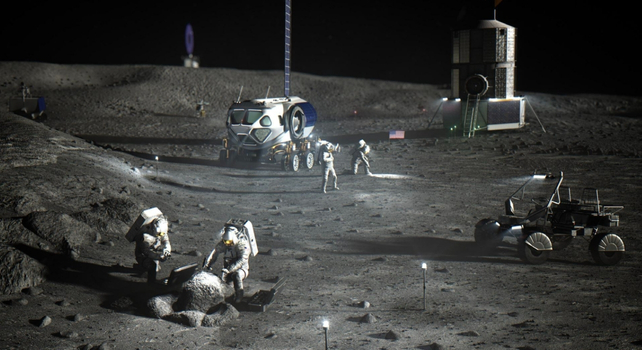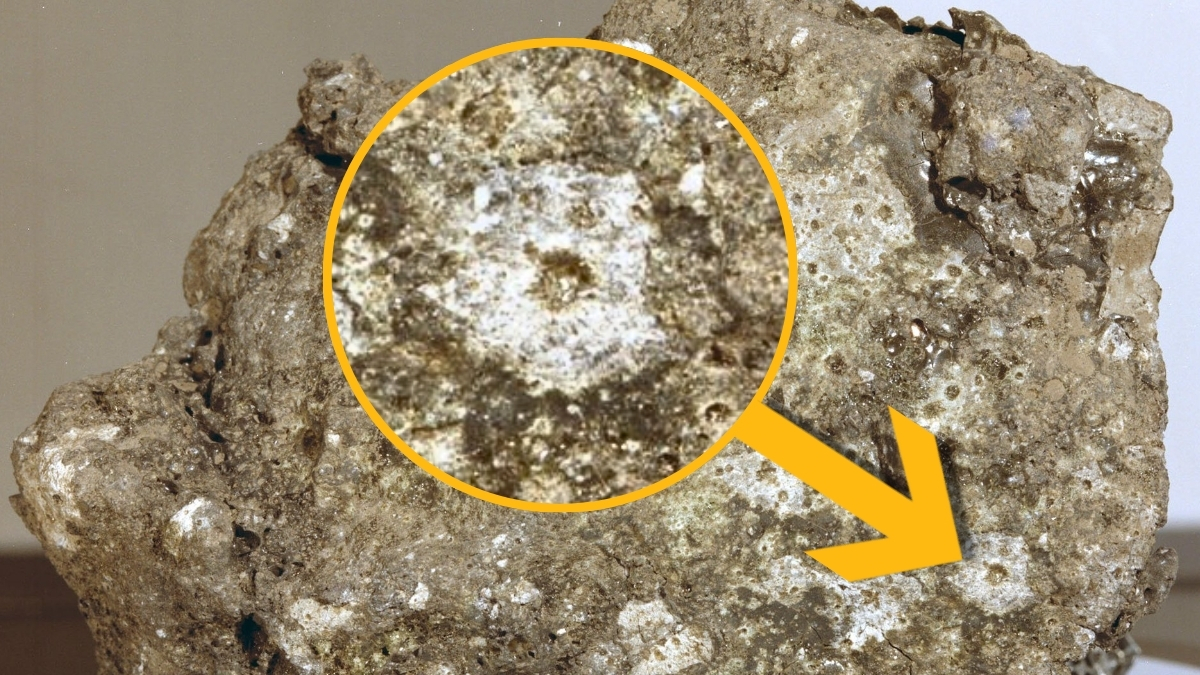The Moon has no atmosphere, no weather, and no wind. Yet it faces an invisible bombardment more relentless than any terrestrial storm, a constant rain of micrometeoroids, tiny fragments of rock and metal traveling at speeds up to 70 kilometers per second.
As NASA’s Artemis program prepares to establish a permanent lunar base, understanding this silent threat has become critical to keeping future astronauts safe.
A new analysis led by Daniel Yahalomi quantifies just how intense this bombardment will be. Using NASA’s Meteoroid Engineering Model, the researchers calculated impact rates for a hypothetical lunar base roughly the size of the International Space Station.
Related: NASA Confirms First Crewed Mission to Orbit The Moon in 50+ Years Set For 2026
The numbers are sobering, between 15,000 and 23,000 impacts per year from particles ranging from a millionth of a gram to ten grams.
These aren’t gentle collisions. Even a particle massing just one microgram, which would be invisible to the naked eye, strikes with enough energy to crater metal and potentially puncture equipment.
Unlike Earth, where our thick atmosphere vaporises most debris before it reaches the ground, the Moon’s vacuum offers no such protection. Every micrometeoroid that approaches the lunar surface makes contact at hypervelocity.
 Cross sections of different micrometeorite classes: a) Fine-grained unmelted; b) Coarse-grained Unmelted; c) Scoriaceous; d) Relict-grain Bearing; e) Porphyritic; f) Barred olivine; g) Cryptocrystalline; h) Glass; i) CAT; j) G-type; k) I-type; and l) Single mineral. Except for G- and I-types, all are silicate-rich, called stony MMs. Scale bars are 50 μm. (Shaw Street)
Cross sections of different micrometeorite classes: a) Fine-grained unmelted; b) Coarse-grained Unmelted; c) Scoriaceous; d) Relict-grain Bearing; e) Porphyritic; f) Barred olivine; g) Cryptocrystalline; h) Glass; i) CAT; j) G-type; k) I-type; and l) Single mineral. Except for G- and I-types, all are silicate-rich, called stony MMs. Scale bars are 50 μm. (Shaw Street)
The threat isn’t uniform across the lunar landscape, though. Yahalomi’s team found that impact rates vary by location, with the lunar poles experiencing the lowest bombardment, which is welcome news since NASA has targeted the south pole for its first Artemis base.
The highest impact rates occur near the sub-Earth longitude, the region that perpetually faces our planet. Between these extremes, impact rates vary by a factor of roughly 1.6.
Why does location matter? The answer lies in the Moon’s complex relationship with Earth and the Sun. The Moon’s orbit shields certain regions from meteoroid streams, while other areas remain more exposed.
Understanding these patterns helps mission planners choose sites that offer natural protection alongside other necessities like water ice access and communication with Earth.
 Artist impression of the Artemis Base Camp. (NASA)
Artist impression of the Artemis Base Camp. (NASA)
Protection systems will be essential regardless of location. The researchers modelled how aluminium Whipple shields, the same multi-layer bumper systems used on the International Space Station, would perform on the Moon.
These shields work by fragmenting incoming particles on a sacrificial outer layer, spreading the impact energy before it reaches critical equipment or habitat walls.
The analysis provides mission designers with a mathematical relationship describing how many impacts would penetrate shielding based on the shield’s specifications and location.
This allows engineers to calculate the precise thickness of protection needed to reduce risk to acceptable levels without adding unnecessary mass to structures launched from Earth.
For astronauts living months at a lunar base, this mostly invisible rain of debris will become part of daily life, a reminder that even on our closest celestial neighbour, space remains fundamentally hostile to our presence.
This article was originally published by Universe Today. Read the original article.

